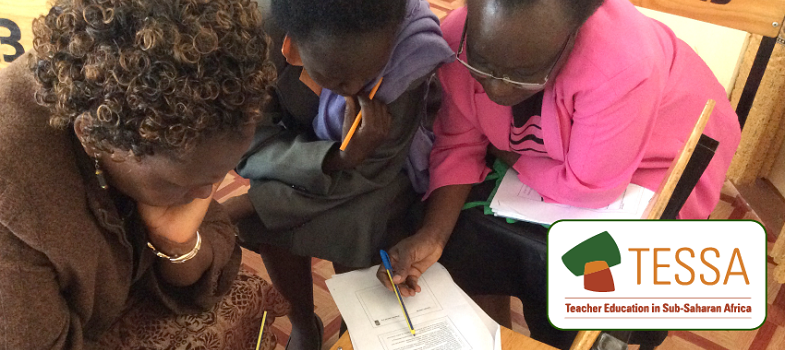2. Learning a new language through everyday tasks
Providing natural opportunities for developing your pupils’ skills in the additional language is important. Here we suggest ways that you can involve the community and use local skills and wisdom as a resource for classroom activities.
You have seen, in Case Study 1 and Activity 1, how everyday instructions can provide a useful natural context for language learning. Pupils listened and showed understanding through actions. In this part, we suggest you use local recipes and processes as contexts for instructions, giving pupils the opportunity to speak (and write) as well as listen.
The activities used here will be carried forward to Section 5, where your class begins to compile a book of recipes.
Case Study 2: Adult learners learn through doing
Some adult learners of ciNyanja were spending a day in the townships as part of their course at the local college. Each learner was accompanied by a language helper who was a ciNyanja speaker. The helpers supported the learners as they tried out the language they had learned; buying vegetables from hawkers on the streets and chatting with the families that were hosting them.
An important part of the day was cooking a meal. The learner was supposed to do the cooking, instructed by the language helper. The cooking had been practised and mimed, and often written down or recorded on tape, in classes the week before. In Zambian tradition, the men were given a list of things to go to the market to buy, while women were asked to stay at home and cook foods like impwa, cikanda, cibwabwa and tomato and onion gravy. They also talked of how they might swap roles around to help them learn the language.
When the meal was over, some Zambian songs were sung, and learners learned traditional Ngoni children’s games. Once the dishes were washed up, a happy and exhausted group of language learners boarded taxis to go home.
Activity 2: Learning through doing local activities
- Tell your pupils they are to going find out how certain household tasks are done and explain the steps of the process in the additional language. Ask pupils to bring the information from home or invite community members to school to demonstrate the skills.
- Divide pupils into pairs or groups (these could be mixed-ability groups), to work out and, if possible, write down the steps of one of these processes in the additional language. Go round and help them with new vocabulary they may need.
- Give the groups time to memorise and rehearse the steps, in preparation for instructing others. They could collect from home items that are needed for the process.
- The next day, let one pupil use the additional language to instruct a member of another group, while the class watches e.g. sweeping the house.
How well did the pupils respond to this kind of activity?
Could you use it with other processes to extend their vocabulary?
If so, how would you plan this?
1. Encouraging the use of English



